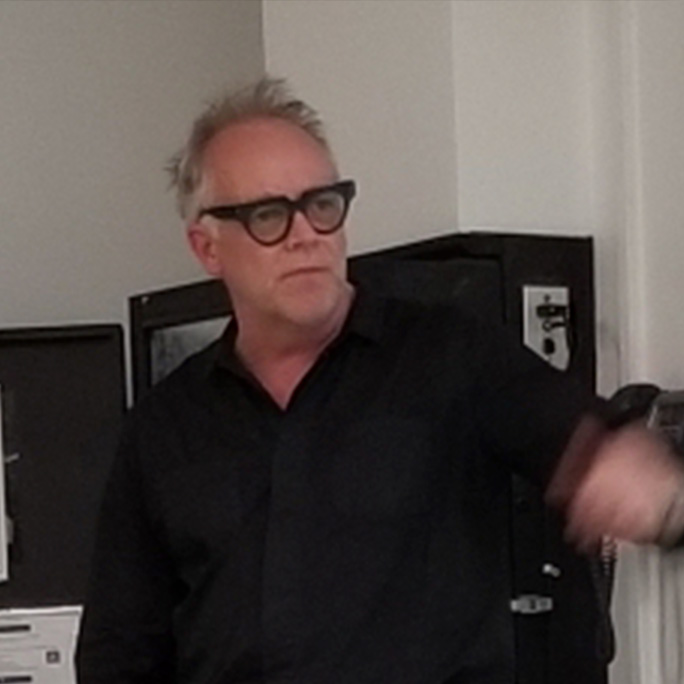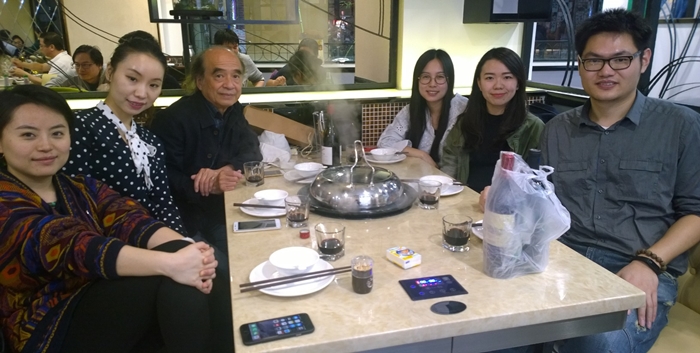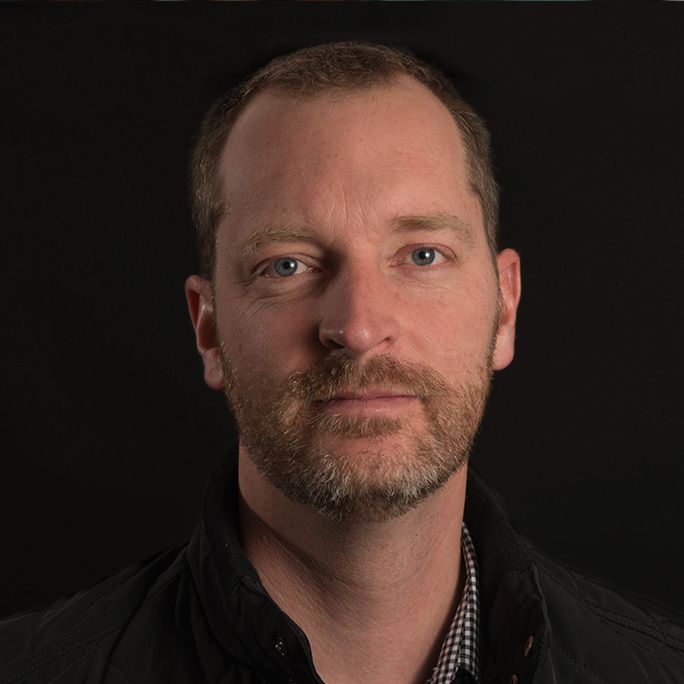Faculty News
Sep 17, 2018
 Amir Alrubaiy (MLA ’03 and MArch ’05), assistant professor clinical teaching track of architecture, is now a licensed Architect in the state of Colorado. Realizing that this license represents a culmination of nearly 16 years of architectural education, internship, practice and teaching, Amir is excited for the opportunities and explorations that this step can open.
Amir Alrubaiy (MLA ’03 and MArch ’05), assistant professor clinical teaching track of architecture, is now a licensed Architect in the state of Colorado. Realizing that this license represents a culmination of nearly 16 years of architectural education, internship, practice and teaching, Amir is excited for the opportunities and explorations that this step can open.

Jody Beck, assistant professor of landscape architecture, had an article published in Food Studies: An Interdisciplinary Journal, Volume 7, Issue 1 (January 9, 2017). Here is the abstract for “Food and Form-of-Life: A Philosophical Argument for Urban and Peri-Urban Agriculture.” Jody was appointed by Governor John Hickenlooper to a three-year term on the Colorado Food Systems Advisory Council (COFSAC). COFSAC, established through the LiveWell Colorado-initiated Senate Bill 10-106, is a legislatively-mandated, volunteer-based, 15-member body of state agencies and diverse food systems stakeholders. Its charge is to advance recommendations that strengthen healthy food access for all Coloradans through Colorado agriculture and local food systems and economies.
 The Colorado Municipal League’s February 3, 2017, newsletter has a story about the Lasley Park Master Plan that Master of Landscape Architecture students developed in Assistant Professor Clinical Teaching Track Lori Catalano’s Advanced Landscape Architecture Design Studios in 2015-16, “Partnership with CU Denver Results in Approval for Park Renovations.” Lori and the students worked with the City of Lakewood staff on this project as part of the Hometown Colorado Initiative.
The Colorado Municipal League’s February 3, 2017, newsletter has a story about the Lasley Park Master Plan that Master of Landscape Architecture students developed in Assistant Professor Clinical Teaching Track Lori Catalano’s Advanced Landscape Architecture Design Studios in 2015-16, “Partnership with CU Denver Results in Approval for Park Renovations.” Lori and the students worked with the City of Lakewood staff on this project as part of the Hometown Colorado Initiative.

Emmanuel Didier, instructor of landscape architecture and principal of Didier Design Studio, has his firm’s work featured in a new publication, The Magic of Children’s Gardens: Inspiring Through Creative Design by Lolly Tai (Temple University Press, 2017). The book presents 19 case studies of exemplary green spaces designed specifically for children, including their “Childhood’s Gate Garden” at the Arboretum at Penn State.Didier Design Studio also is proud to introduce the design of a new children’s garden for the “Voices Carry” Child Advocacy Center in Fort Collins. “Voices Carry” provides an integrated set of services for children and families who are impacted by child abuse. Didier Design Studio supports the institution as a pro-bono effort. Through their experience designing gardens for children, they have seen the powerful ways an enhanced connection to "nature" can further promote health and healing. Providing features that encourage sensory engagement, imagination, and active play, the new garden will be a strong extension of the center’s mission. Learn more at the Voices Carry website.
 Phil Gallegos, associate professor of architecture, presented his paper International Design Build: Educational and Professional Experiments on May 8, 2017, at the 5th Annual International Conference on Architecture and Civil Engineering (ACE 2017) in Singapore. His paper presented two years of data on matching professional requirements for employee skill sets with student learned skilled sets from the Nicaragua Design Build undergraduate program. Professionals at OZ Architecture provided mapping information on required skill sets for the international portion of their practice. Students were surveyed prior to and after the study abroad experience in Nicaragua. Dr. Gallegos’s paper highlighted what students learned that would be essential in an international professional practice. The results presented in the paper at the conference were well received.
Phil Gallegos, associate professor of architecture, presented his paper International Design Build: Educational and Professional Experiments on May 8, 2017, at the 5th Annual International Conference on Architecture and Civil Engineering (ACE 2017) in Singapore. His paper presented two years of data on matching professional requirements for employee skill sets with student learned skilled sets from the Nicaragua Design Build undergraduate program. Professionals at OZ Architecture provided mapping information on required skill sets for the international portion of their practice. Students were surveyed prior to and after the study abroad experience in Nicaragua. Dr. Gallegos’s paper highlighted what students learned that would be essential in an international professional practice. The results presented in the paper at the conference were well received.
 Julee Herdt, professor of architecture and architect, has been awarded a second patent with co-inventors and research partners John Hunt, U.S. Department of Agriculture, Forest Products Laboratory, and alumnus Kellen Schauermann (MArch 2009), architect and project manager at Boulder Associates Architects. This latest patent is for software and computational methods used in the design of biobased, environmental building materials and inventions from waste fibers. This is Julee’s second patent award in the past two years. An initial patent, issued in 2015, was for “BioSIPs”, a new, eco-friendly construction system in which 100% waste fibers are recycled into high-strength, easy to assemble building panels and flat, multi-use bioboards. Fiber wastes used in these patented technologies include: post-consumer wastepaper, recycled cardboard, industry scraps, agricultural residues, bovine waste, forest and construction leftovers, hemp, noxious weeds, flowers, and aromatic plants.
Julee Herdt, professor of architecture and architect, has been awarded a second patent with co-inventors and research partners John Hunt, U.S. Department of Agriculture, Forest Products Laboratory, and alumnus Kellen Schauermann (MArch 2009), architect and project manager at Boulder Associates Architects. This latest patent is for software and computational methods used in the design of biobased, environmental building materials and inventions from waste fibers. This is Julee’s second patent award in the past two years. An initial patent, issued in 2015, was for “BioSIPs”, a new, eco-friendly construction system in which 100% waste fibers are recycled into high-strength, easy to assemble building panels and flat, multi-use bioboards. Fiber wastes used in these patented technologies include: post-consumer wastepaper, recycled cardboard, industry scraps, agricultural residues, bovine waste, forest and construction leftovers, hemp, noxious weeds, flowers, and aromatic plants.
 Kevin Hirth, assistant professor clinical teaching track of architecture, has won the 2017 Architectural League Prize for Young Architects + Designers. The Architectural League Prize is an annual competition, series of lectures, and exhibition organized by The Architectural League and its Young Architects + Designers Committee. The prize, which has been around for over 30 years, is awarded annually to a group of six young designers within ten years of graduation from a professional degree program. We think Kevin is the first person who is practicing in Colorado to win the prize. Former CAP faculty Douglas Darden won the prize shortly before moving here, and Clark Thenhaus won the prize soon after leaving. The prize will entail a lecture and exhibition at the Parsons School of Design this summer. Read more on the Architectural League Prize website.
Kevin Hirth, assistant professor clinical teaching track of architecture, has won the 2017 Architectural League Prize for Young Architects + Designers. The Architectural League Prize is an annual competition, series of lectures, and exhibition organized by The Architectural League and its Young Architects + Designers Committee. The prize, which has been around for over 30 years, is awarded annually to a group of six young designers within ten years of graduation from a professional degree program. We think Kevin is the first person who is practicing in Colorado to win the prize. Former CAP faculty Douglas Darden won the prize shortly before moving here, and Clark Thenhaus won the prize soon after leaving. The prize will entail a lecture and exhibition at the Parsons School of Design this summer. Read more on the Architectural League Prize website.
 An expanded version of an article by Associate Professor of Landscape Architecture Joern Langhorst on the High Line in New York City was published as a chapter in the book Post-Industrial Urban Greenspace - An Environmental Justice Perspective, edited by Jennifer Foster and L. Anders Sandberg (Routledge, 2016). Langhorst’s chapter titled "Re-Presenting Transgressive Ecologies: Post-Industrial Sites as Contested Terrains” provides a critical perspective on one of the most celebrated and iconic urban redevelopment projects.
An expanded version of an article by Associate Professor of Landscape Architecture Joern Langhorst on the High Line in New York City was published as a chapter in the book Post-Industrial Urban Greenspace - An Environmental Justice Perspective, edited by Jennifer Foster and L. Anders Sandberg (Routledge, 2016). Langhorst’s chapter titled "Re-Presenting Transgressive Ecologies: Post-Industrial Sites as Contested Terrains” provides a critical perspective on one of the most celebrated and iconic urban redevelopment projects.

Yuk Lee, professor emeritus of urban and regional planning, was a visiting professor at Northwestern Polytechnical University in Xi’an, China, during the month of April 2017. He is pictured here on April 14 visiting with some alumni of our China-CAP programs, established during 2008-2014 under the leadership of Dean Mark Gelernter and Dr. Lee.
Pictured, left to right: Jiao Wen (MLA 2013), Jiani Qiu (Lilith), Denver Gensler Intern from Tongji University 2012, Professor Emeritus Yuk Lee, Liu Quan (MLA dual degree with Tongji University 2012-13), Sun Qian (MLA dual degree with Tongji University 2012-13), and Zhoule (Ron), Denver Gensler intern from Tongji University 2013.
 Carrie Makarewicz, assistant professor of urban and regional planning, co-authored an article in the Journal of the American Planning Association, Vol 83, Issue 3 (2017): “Contextualizing Walkability: Do Relationships Between Built Environments and Walking Vary by Socioeconomic Context?” Carrie was interviewed for an article in the St. Louis Dispatch on March 26, 2017, “MetroLink tax hike touted as way to move the city forward,” that cites Denver as an example of a city that sparked growth, in part, by expanding its light rail system. Carrie said expanding the light rail system was a central piece in a multipronged, 20-year approach to boosting the region’s economy. Denver’s development community bought into creating mixed-use neighborhoods near light rail lines, she said. And those walkable communities complemented the city’s existing bus routes and bike lanes.
Carrie Makarewicz, assistant professor of urban and regional planning, co-authored an article in the Journal of the American Planning Association, Vol 83, Issue 3 (2017): “Contextualizing Walkability: Do Relationships Between Built Environments and Walking Vary by Socioeconomic Context?” Carrie was interviewed for an article in the St. Louis Dispatch on March 26, 2017, “MetroLink tax hike touted as way to move the city forward,” that cites Denver as an example of a city that sparked growth, in part, by expanding its light rail system. Carrie said expanding the light rail system was a central piece in a multipronged, 20-year approach to boosting the region’s economy. Denver’s development community bought into creating mixed-use neighborhoods near light rail lines, she said. And those walkable communities complemented the city’s existing bus routes and bike lanes.
 Carolyn McAndrews, assistant professor of urban and regional planning, is co-author of an article published online on June 22, 2017, in the American Journal of Public Health, “Understanding and Improving Arterial Roads to Support Public Health and Transportation Goals.”
Carolyn McAndrews, assistant professor of urban and regional planning, is co-author of an article published online on June 22, 2017, in the American Journal of Public Health, “Understanding and Improving Arterial Roads to Support Public Health and Transportation Goals.”
 Hans Morgenthaler has been promoted to professor in the Department of Architecture in the College of Architecture and Planning. Hans joined the faculty at the University of Colorado Denver in 1989 and was tenured in 1996. His administrative roles in the college have included Associate Chair of Architecture, Interim Department Chair, and Chair of Architecture, as well as Associate Dean overseeing CAP’s former undergraduate Environmental Design program on the Boulder campus. He received the college’s award for Excellence in Teaching in 2007. Dean Emeritus Mark Gelernter wrote in his letter of support: “Professor Morgenthaler embodies the best of a university faculty member. His research makes genuine and important contributions to his discipline, offering fresh insights to issues of great cultural and aesthetic importance. He delivers one of the most difficult and important courses in the architecture curriculum (History of Architecture) with clear evidence of a caring and thoughtful teacher. And he served as an administrator at a time of transformational change in the history of the college.”
Hans Morgenthaler has been promoted to professor in the Department of Architecture in the College of Architecture and Planning. Hans joined the faculty at the University of Colorado Denver in 1989 and was tenured in 1996. His administrative roles in the college have included Associate Chair of Architecture, Interim Department Chair, and Chair of Architecture, as well as Associate Dean overseeing CAP’s former undergraduate Environmental Design program on the Boulder campus. He received the college’s award for Excellence in Teaching in 2007. Dean Emeritus Mark Gelernter wrote in his letter of support: “Professor Morgenthaler embodies the best of a university faculty member. His research makes genuine and important contributions to his discipline, offering fresh insights to issues of great cultural and aesthetic importance. He delivers one of the most difficult and important courses in the architecture curriculum (History of Architecture) with clear evidence of a caring and thoughtful teacher. And he served as an administrator at a time of transformational change in the history of the college.”
 Jeremy Németh, associate professor of urban and regional planning, has a chapter written with Evan Carver (MURP '13) in the 2017 Routledge book Place, Space, and Mediated Communication, edited by Carolyn Marvin and Hong Sun-ha. Their chapter is called "Democracy, protest and public space: does place matter?" Jeremy was quoted concerning zoning restrictions for marijuana facilities in the “Council Crackdown” section of CityPulse in Lansing, Michigan, on April 19, 2017. Read “Strict proposed ordinance uses zoning to sharply reduce dispensaries.”
Jeremy Németh, associate professor of urban and regional planning, has a chapter written with Evan Carver (MURP '13) in the 2017 Routledge book Place, Space, and Mediated Communication, edited by Carolyn Marvin and Hong Sun-ha. Their chapter is called "Democracy, protest and public space: does place matter?" Jeremy was quoted concerning zoning restrictions for marijuana facilities in the “Council Crackdown” section of CityPulse in Lansing, Michigan, on April 19, 2017. Read “Strict proposed ordinance uses zoning to sharply reduce dispensaries.”
 Peter Park, city planner and associate professor adjunct of urban and regional planning, was quoted in The New York Times article on October 21, 2017, “Once So Chic and Swooshy, Freeways are Falling Out of Favor.” He favors removing highways in cities where neighborhoods have been “significantly disconnected.” Not only in San Francisco but also in every case where a highway has been removed, Park argues, “the city has improved.”
Peter Park, city planner and associate professor adjunct of urban and regional planning, was quoted in The New York Times article on October 21, 2017, “Once So Chic and Swooshy, Freeways are Falling Out of Favor.” He favors removing highways in cities where neighborhoods have been “significantly disconnected.” Not only in San Francisco but also in every case where a highway has been removed, Park argues, “the city has improved.”
 Andrew Rumbach, assistant professor of urban and regional planning, published an article "At the Roots of Urban Disasters: Planning and Uneven Geographies of Risk in Kolkata, India" in the most recent issue of the Journal of Urban Affairs (10 March 2017).The paper examines the root causes of disaster risk in Indian megacities, identifying key trends in the political economy of urban development that put low-income groups at-risk. The paper is based on several years of field research in Kolkata, India's third largest city and one of the world's most vulnerable cities to natural hazards and the effects of climate change. Andy received two grants for research on international planning in 2017. The first, a $25,000 grant from the Office of Research Services, allowed him and two graduate students to travel to northeastern India to study flooding and landslide risk in fast-growing villages. The second, a teaching enhancement grant from the Center for Faculty Development, will help Andy and colleagues from the University of Michigan to evaluate a case-based approach to international planning pedagogy.
Andrew Rumbach, assistant professor of urban and regional planning, published an article "At the Roots of Urban Disasters: Planning and Uneven Geographies of Risk in Kolkata, India" in the most recent issue of the Journal of Urban Affairs (10 March 2017).The paper examines the root causes of disaster risk in Indian megacities, identifying key trends in the political economy of urban development that put low-income groups at-risk. The paper is based on several years of field research in Kolkata, India's third largest city and one of the world's most vulnerable cities to natural hazards and the effects of climate change. Andy received two grants for research on international planning in 2017. The first, a $25,000 grant from the Office of Research Services, allowed him and two graduate students to travel to northeastern India to study flooding and landslide risk in fast-growing villages. The second, a teaching enhancement grant from the Center for Faculty Development, will help Andy and colleagues from the University of Michigan to evaluate a case-based approach to international planning pedagogy.

Ken Schroeppel, assistant professor clinical teaching track of urban and regional planning and founder of the DenverInfill and DenverUrbanism website and blogs, gets quoted frequently. Recent venues include:
Denver Post on November 3, 2017: “Metro Denver chasing 80 other corporate prospects besides Amazon
Confluence Denveron April 26, 2017: “As Denver grows taller, city planners scramble to create rules that make sense”
Colorado Public Radio on April 4, 2017: “Denver Construction Is A-Boomin’, But For How Long?”
Colorado Real Estate Journal on February 28, 2017: “Schroeppel Addresses Urban Issues”
Confluence Denver on January 25, 2017: “In Montbello, a future of promise and challenge”

Rick Sommerfeld, assistant professor of architecture and director of CAP’s design build program Colorado Building Workshop, presented a paper titled "Towards a Structural Gestalt: The Lamar Station Classroom for Urban Farming” at the Association of Architectural Educators (AAE) conference "Architecture Connects” on September 7, 2017, at Oxford Brookes University in Oxford, England. The conference also featured films on Live Projects (what we in the U.S. call design build) and showed the film by Jesse Kuroiwa, CAP’s Visual Resource Center Multi-Media Production Program Manager, titled “Colorado Outward Bound School Micro Cabins.”
 Leila Tolderlund, assistant professor clinical teaching track and associate chair of landscape architecture, was quoted in two Denverite articles about Denver’s green roof initiative, which passed on November 7, 2017:
Leila Tolderlund, assistant professor clinical teaching track and associate chair of landscape architecture, was quoted in two Denverite articles about Denver’s green roof initiative, which passed on November 7, 2017:
Before the election, on October 24: “Initiative 300: what you need to know about the Denver Green Roofs Initiative.”
After the election, on November 9: “Denver is one of the first U.S. cities to require green roofs — so what happens now?” Leila said there’s really nothing to fear now that the green roof initiative passed in Denver. She is an expert on green roofs and the author of the EPA’s design guidelines and maintenance manual for green roofs in the semi-arid and arid West. “There really are a lot of pre-made modular green roof systems that meet the minimum requirements,” she said. “There is no need for anxiety.”
 Brad Tomecek, lecturer in architecture and principal of Tomecek Studio Architecture, gave a talk on September 13, 2017, called “Intimacy and Making” at one of the R & D Sessions sponsored by Architect Magazine. For more than a decade, Architect’s annual R+D Awards has identified leading examples of architectural research in the material sciences, building construction and performance, digital design and fabrication, and other areas. The program celebrates investigations, products, and buildings as developed by nonprofits, schools, manufacturers, architects, and designers. “The R+D Sessions” brings together masterminds behind recent and past winners of the award, in four cities across the United States, to share their latest initiatives and findings in architectural research. Brad and his firm were featured in Architect (The Journal of the American Institute of Architects) on March 2, 2017, in the “Next Progressives” section: Tomecek Studio Architecture: Brad Tomecek explores light and material in this new venture in Denver. Brad and alumnus Brian Martin (MArch 2013) have their work featured in the winter 2017 issue of Modern in Denver magazine. See the article “Only What You Need” about the beautiful small house Brad and Brian designed for a Boulder couple.
Brad Tomecek, lecturer in architecture and principal of Tomecek Studio Architecture, gave a talk on September 13, 2017, called “Intimacy and Making” at one of the R & D Sessions sponsored by Architect Magazine. For more than a decade, Architect’s annual R+D Awards has identified leading examples of architectural research in the material sciences, building construction and performance, digital design and fabrication, and other areas. The program celebrates investigations, products, and buildings as developed by nonprofits, schools, manufacturers, architects, and designers. “The R+D Sessions” brings together masterminds behind recent and past winners of the award, in four cities across the United States, to share their latest initiatives and findings in architectural research. Brad and his firm were featured in Architect (The Journal of the American Institute of Architects) on March 2, 2017, in the “Next Progressives” section: Tomecek Studio Architecture: Brad Tomecek explores light and material in this new venture in Denver. Brad and alumnus Brian Martin (MArch 2013) have their work featured in the winter 2017 issue of Modern in Denver magazine. See the article “Only What You Need” about the beautiful small house Brad and Brian designed for a Boulder couple.
 Austin Troy, professor and chair of urban and regional planning, has received a $350,000 grant from the National Aeronautic and Space Administration (NASA) for his project “Earth Observation Data in Support of National and Subnational Ecosystem Accounts in the United States.” The project is part of the Group on Earth Observations(GEO) Work Programme, an intergovernmental organization working to improve the availability, access, and use of Earth observations to inform decisions and benefit society. The Applied Sciences Program within the Earth Science Division of the NASA Science Mission Directorate manages the projects.
Austin Troy, professor and chair of urban and regional planning, has received a $350,000 grant from the National Aeronautic and Space Administration (NASA) for his project “Earth Observation Data in Support of National and Subnational Ecosystem Accounts in the United States.” The project is part of the Group on Earth Observations(GEO) Work Programme, an intergovernmental organization working to improve the availability, access, and use of Earth observations to inform decisions and benefit society. The Applied Sciences Program within the Earth Science Division of the NASA Science Mission Directorate manages the projects.
Austin was elected to the Association of Collegiate Schools of Planning (ACSP) Governing Board for fall 2017-19. He serves as central region representative. In April 2017 Austin travelled to New York as part of a delegation from the U.S. Forest Service’s Rocky Mountain Research Station, to visit the Forest Service’s New York City Urban Field Station, a facility in Fort Totten, Queens, that serves as a hub for research, outreach and programs related to urban environmental stewardship, and that is managed in partnership with the New York City Department of Parks and Recreation. The group met with various local and federal officials, including New York City’s Chief of Horticulture, Forestry and Natural Resources, toured a number of parks and natural areas currently under restoration, and participated in a tree planting.

Kat Vlahos, professor and chair of architecture, with lecturers Abigail Christman and Melanie Short, and graduate research assistant Sara Rosenberg, all of CAP’s Center of Preservation Research, worked with Historic Denver and neighbors to come up with a Krisana Park Pattern Book that identifies the principal home designs and floor plans and suggests complementary additions for the mid-century modern homes in the southeast Denver neighborhood. In November 2016, the Denver City Council unanimously adopted a conservation overlay protecting those homes, meaning they will largely maintain their character, including low-slung roofs, horizontal planes and no full second story. The conservation overlay includes changes to setbacks, bulk planes and other zoning guidelines to make it easier to do additions in accordance with the pattern book. Read the Denverite story “Denver City Council protects Krisana Park’s mid-mod homes.”